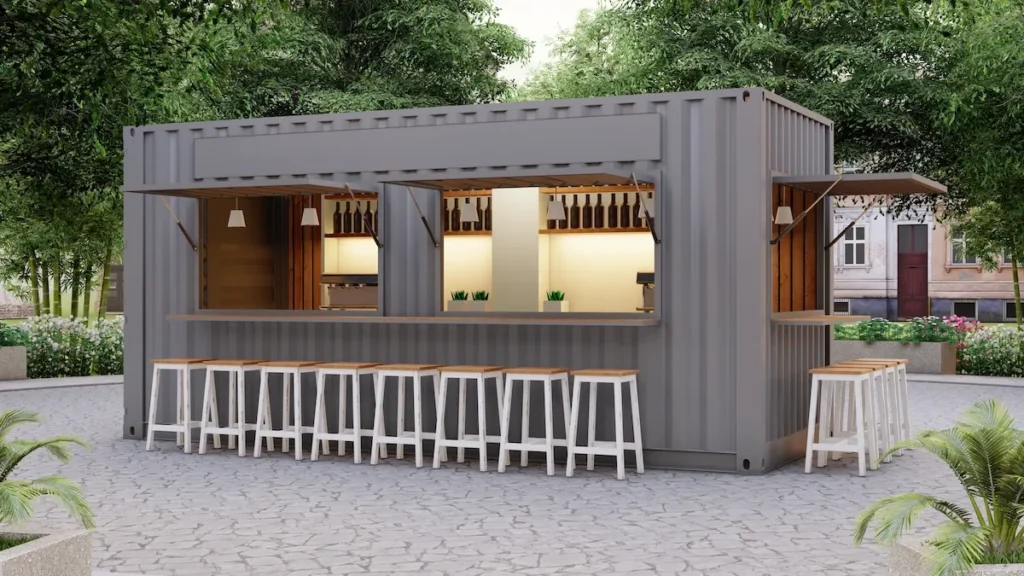
The versatile nature of shipping container buildings is propelling them into the limelight in the construction world. Known for their durability, cost-effectiveness, and unique charm, these structures are being repurposed for many innovative applications worldwide. Their adaptability allows them to fit into diverse environments, offering practical and aesthetically pleasing solutions.
Utilizing shipping containers as building materials offers an exciting opportunity to break away from traditional construction norms. Initially designed for transport, these steel giants boast a rugged structure that withstands extreme weather conditions. Not only are they sturdy and mobile, but they also present an environmentally friendly alternative by reusing materials and reducing waste. In doing so, they offer a bridge between creativity and sustainability, providing a blueprint for future construction endeavors.
The Rise of Shipping Container Architecture
Shipping container architecture has evolved from its humble beginnings in maritime logistics to becoming a cornerstone of modern construction. Over the decades, their transformation from vessels of the sea to innovative building blocks showcases the creative potential of adaptive reuse. As shipping container buildings continue gaining popularity, they are solving real-world issues in housing, retail, education, and beyond sectors.
Their popularity has skyrocketed due to advantages such as easy transportability and structural resilience. They significantly reduce construction time and costs, making them an attractive option for various infrastructure projects where budget and speed are paramount. This rapid expansion in use is a testament to the ingenuity of architects and designers who saw potential where others saw only surplus.
Additionally, using repurposed containers helps mitigate environmental impact by decreasing the need for new building materials. Traditional construction processes often result in significant material waste, but shipping containers curtail such downfalls, leading to a more eco-friendly building practice. Each container repurposed into a home or office is a step towards a future where sustainability in construction is not just a trendy option but a standard practice.
Residential Applications
One of the most compelling uses for shipping containers is in residential construction. They provide a cost-effective solution to the global housing crisis, particularly in urban areas where affordable housing is a growing concern. As cheap, sustainable housing demand rises, shipping containers offer a feasible solution. This trend aligns with the principles of sustainable architecture, contributing to eco-conscious innovations across the globe. Their modular nature enables creative and customizable living spaces, allowing homeowners to personalize their environments uniquely. Homeowners can stack, stagger, or combine units to create living spaces that are as expansive or compact as desired.
In specific communities, residents have banded together to transform entire neighborhoods using shipping containers, creating vibrant and colorful living areas that are both practical and visually appealing. These neighborhoods often serve as tight-knit communities, showcasing a successful balance between modern architecture and a sense of belonging. With suitable design approaches, container homes can include beautiful windows, stylish siding, and innovative interiors that rival traditional homes in comfort and style.
Creative Commercial Spaces
The commercial sector has also embraced shipping container architecture, with retail stores, restaurants, and offices popping up in these modular units. They’re perfect for businesses seeking a distinct and modern aesthetic, providing a fresh look that attracts customers and sets businesses apart. Pop-up shops and innovative storefronts use containers to captivate customers with striking designs and unique shopping experiences. The container’s industrial feel lends well to contemporary retail aesthetics, often drawing attention through distinctive styling and unconventional layouts.
Office spaces constructed from shipping containers offer flexibility and can be easily assembled or disassembled, adapting to a company’s changing needs. The versatility of these spaces aids businesses in scaling their operations without the burdens typically associated with relocating or remodeling traditional office spaces.
The hospitality industry also finds allure in these structures, transforming them into chic hotels that provide quirky yet comfortable accommodations. From upscale resorts to budget-friendly hostels, the adaptability of containers ensures they can cater to various guest preferences and price points.
Educational Facilities and Institutions
Schools worldwide are maximizing their resources by utilizing shipping containers for educational facilities. These structures can be deployed quickly and affordably, providing additional classrooms, laboratories, or study spaces where traditional construction may not be feasible due to budget constraints or limited infrastructure. They serve as a testament to innovation in educational investments, promoting an environment where financial barriers do not restrict learning.
This educational case study highlights such innovations, showcasing how shipping containers are revolutionizing educational spaces globally. From rural areas needing simple school additions to urban centers exploring alternative pedagogical environments, these facilities offer practical and inspirational learning spaces. Modular classroom designs can foster collaboration and creativity, making them exciting spaces to inspire students.
Emergency and Relief Uses
In times of crisis, shipping containers serve as invaluable resources for creating temporary shelters and medical facilities. Their ability to be rapidly deployed makes them ideal for disaster response and emergency relief efforts. The robust structure of these containers ensures that they can endure various environmental conditions, providing safe and durable shelters during emergencies.
They can be equipped as mobile clinics or quarantine units, ensuring quick and efficient emergency response. Beyond immediate relief, these temporary solutions can evolve into permanent infrastructures, providing long-term support for communities recovering from natural disasters or other crises. This dual functionality reflects the ongoing commitment to delivering sustained care and recovery support in post-disaster scenarios.
Art and Cultural Installations
Artists and cultural organizations are finding new uses for shipping containers as dynamic art spaces and multifunctional venues. Adapted for galleries or performance spaces, they offer a portable, flexible environment for creative expression. These spaces allow art to be experienced in new environments, breaking the traditional art viewing and appreciation mold.
Festivals and events have also harnessed this trend, utilizing container-based designs to create vibrant and engaging spaces for audiences to enjoy. The versatility of the container structure allows for elaborate designs that can house stages, exhibits, and even interactive installations, transforming public spaces into cultural hotbeds of activity and social engagement.
The Future of Shipping Container Buildings
The future of shipping container buildings is promising, driven by technological advances and increasing interest in sustainable building practices. These structures integrate with smart home technology and the Internet of Things (IoT), enhancing their functional capabilities and appeal. As innovation continues to flourish, shipping containers may soon feature advanced automation systems, improved energy efficiency, and enhanced security features.
As policies and regulations evolve, they help to streamline and foster innovation within this field. Communities and networks dedicated to shipping container architecture are thriving, serving as hubs for enthusiasts and professionals to share ideas and resources. This communal approach cultivates knowledge and creativity, pushing the boundaries of what’s possible with these versatile units. These future possibilities inspire confidence that shipping containers will play an integral role in developing sustainable and innovative infrastructure worldwide.
Challenges and Considerations
Despite their many advantages, shipping container buildings do face some challenges. Structural constraints can pose design limitations, which must be addressed creatively. For instance, maintaining the container’s integrity while adding doors, windows, or insulation requires careful planning and execution.
Adhering to zoning laws and building codes requires careful navigation to ensure compliance. As these buildings become more popular, the need for clear regulations grows, prompting architects and builders to stay informed about relevant legal requirements.
However, the potential for future innovations is vast, with new possibilities continually emerging as more projects explore the limits of this flexible and durable construction method. The ongoing dialogue between builders and regulators will play a critical role in shaping the trajectory of container-based construction.
Related Articles
Everything You Need to Know About Turkey Doubles Tournament T-Shirts
A Complete Guide to Strat Wiring Harness sodorless Systems
Comprehensive Guide to 23151-251233 Filtro: Specifications, Compatibility, and Maintenance
Unveiling the Beauty of halauin stauettes inquestion: A Deep Dive into Hawaiian Heritage






